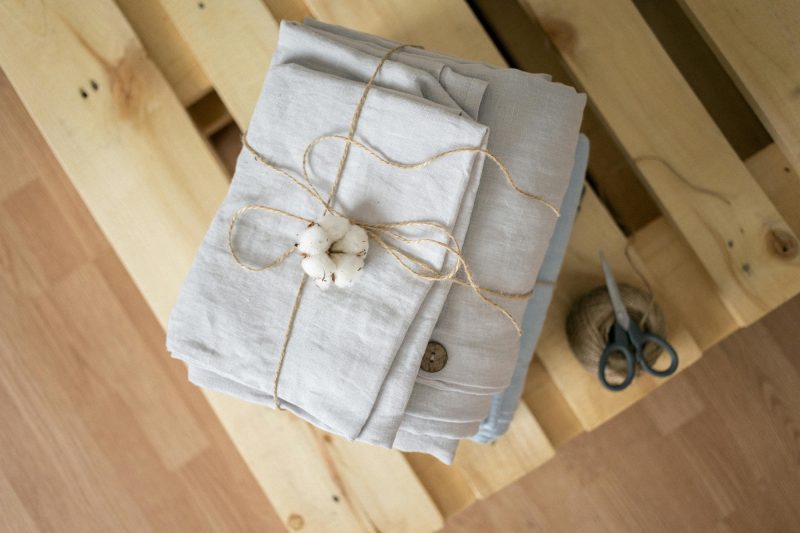Do you know what your clothes are made of? Maybe it’s time we take a closer look. We rate 5 common fabrics from best to worst.
Hemp, linen, even polyester, are common fabrics that are being used to make our clothing and textiles every day. But do you know how they’re grown? Or even made? It’s not just about how they are being grown, but also the processing of the raw material. You can’t just harvest (or create!) the material and use it straight away. It needs processing and refining to made it suitable enough to be used as fabric for clothing. This process can make even the most abundant fibres unsustainable, whether that’s using toxic dyes or mass amounts of water.
Perhaps the first step to understanding how the fashion industry can be so damaging to our planet, is making everyone aware of what their clothing is made from.
Here are 5 common fabrics that we all know of, starting with the best one.
Hemp
This is a top choice when choosing fabrics. Hemp is a versatile fibre and can produce 2 to 3 times more fibre per acre than cotton. This means a lot more can be grown in a smaller area. It also replenishes the soil as it grows causing less damage to the ground and the issues that come with agriculture. The properties of hemp include; softness, warmth, breathability, antibacterial and moisture-wicking. Hemp is a durable fibre and when cared for properly will last a long time. Another benefit of hemp is the fibre is biodegrade. So garments made with 100% hemp are biodegradable at the end of their life. This ensures that no damage is caused to the environment and the fibre can return to the earth as it started.
Linen
Linen is another great choice and is made from the flax plant. The entire plant can be used, reducing waste in the growing and production process. Flax is easily grown and requires far less water than cotton and no chemical fertilisers and pesticides. Linen is a durable, breathable, lightweight, absorbent, antimicrobial, cooling and naturally moth resistant. Although it may be a stiffer fabric at the start, it gradually gets softer with use. It’s also stronger when wet. Linen is 100% biodegradable when undyed or naturally dyed.
Bamboo
Bamboo is one the fastest growing plants in the world. It requires no fertilisers or pesticides and very little water to grow. Although the growing process is quick and requires less resources, the same can’t be said for the production process. Production of bamboo produces quite a bit of waste and is a chemically intensive process to make the fibre soft. A lot of bamboo comes from China, which means it’s hard to regulate and monitor the growing and production methods. The main feature of bamboo is that it’s moisture-wicking, making it great for warm climates. Unfortunately due to its production methods bamboo falls between a natural and synthetic fabric. If you’re looking for a better option, keep an eye out for ‘closed-loop bamboo’. The closed loop system means that 99.5% of chemicals used in the production process are captured and recycled to be used again.
Cotton
Producing cotton comes with a variety of issues. To grow it requires a tremendous amount of water, arable land and pesticides (around 35% of the world’s use). These pesticides cause huge issues to not only the land and run-off into our waterways, but also to the health of the farmer. Most cotton is then treated and coloured using non-natural dyes. Alternatives to traditional cotton include, organic, GOTS-certified, or even better is recycled or upcycled.
Polyester
Around 60% of all clothing is made with polyester. Polyester is essentially a plastic product, meaning it’s made from crude oil. Apart from being cheap to produce, there aren’t many benefits to polyester. It isn’t breathable (you’re wearing plastic!), and the microfibres it produces is a huge issue. These microfibres get washed into our waterways and are unable to be caught or filtered out due to their size, ending up in our oceans causing issues to our marine life. Garments made with polyester are generally cheap and therefore part of our ‘throwaway’ society, where huge amounts of ,nothing end up in landfills where they don’t break down.These garments are made with plastic, and plastic NEVER disappears. Every piece of plastic is still on our planet in one form or another.

Why would you want to spend $50 on a linen top when you can get a polyester one for $5? Hopefully the above sheds some light on why. An ethically made linen top will last for many years. The quality is incomparable to a poorly made cheap polyester top, that you might have to replace every year because it has worn out or gone out of shape.
There is a lot to consider and it’s not about being perfect. It’s about being aware and ultimately reducing our consumption overall. We need to change our attitude towards fashion and see it as an investment in not only our wardrobe but the environment too. By supporting a brand who creates quality, ethically made clothing, you will be supporting the farmer and the manufacturer, as well as the business. They get a fair share of the costs therefore creating a sustainable process to support everyone involved.
The best place to check out some great sustainable brands is our Eco Directory. All brands included in our Eco Directory value sustainability at their heart, and when you support these brands you create a ripple of impact throughout their communities.
